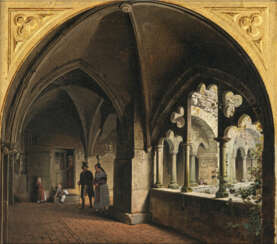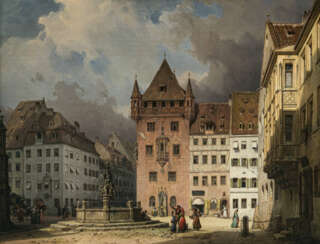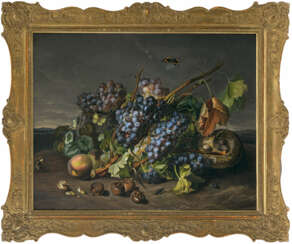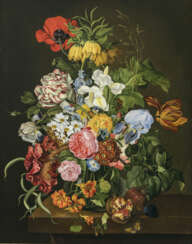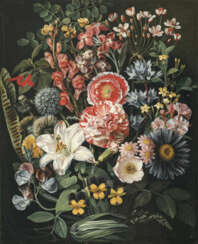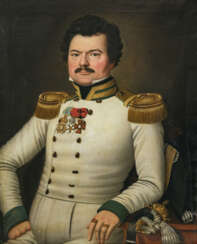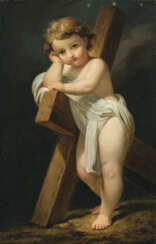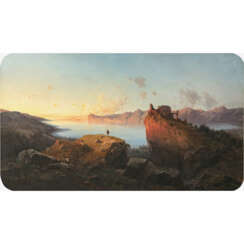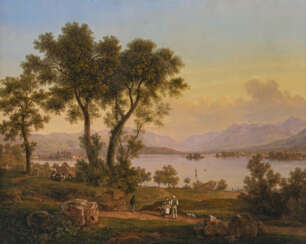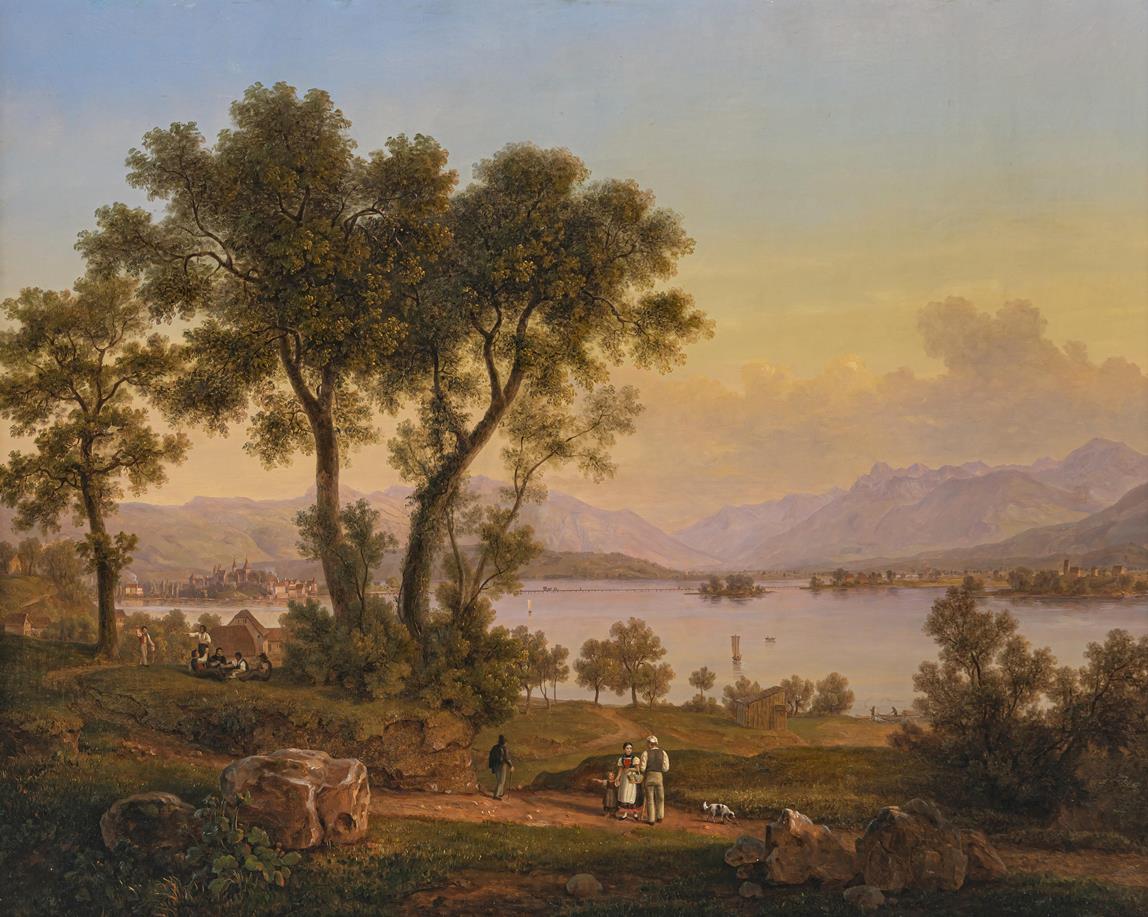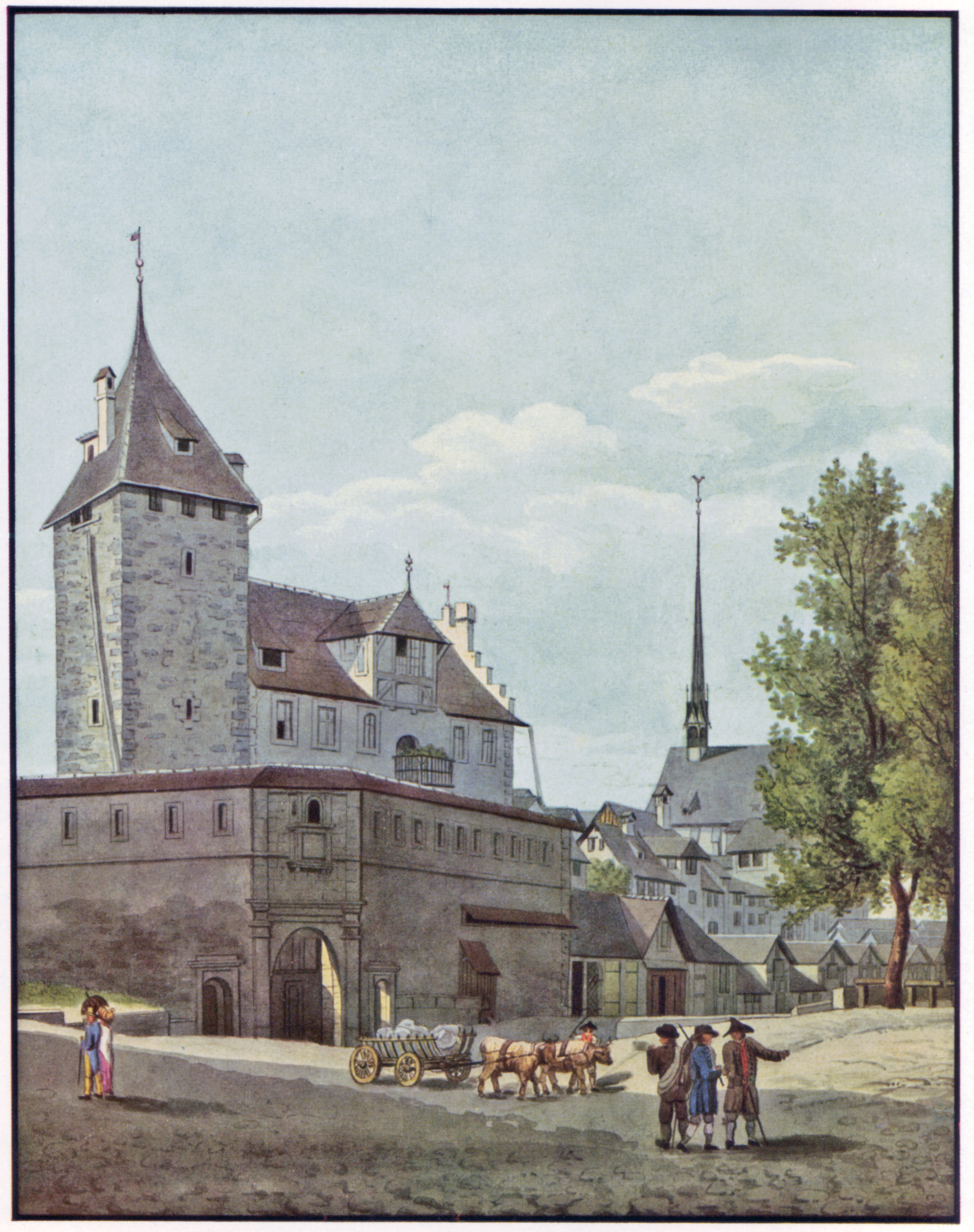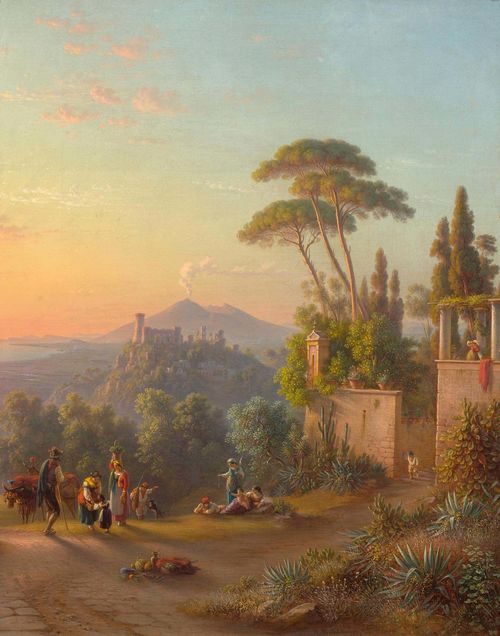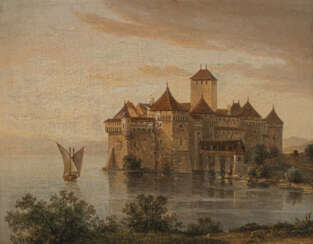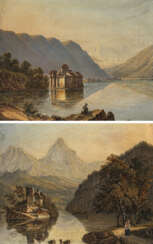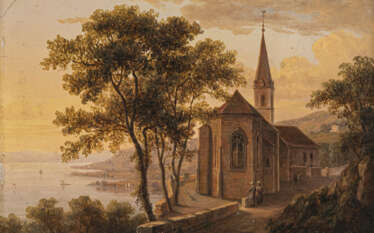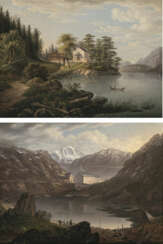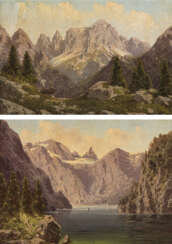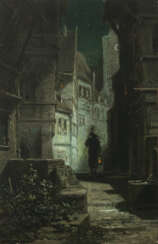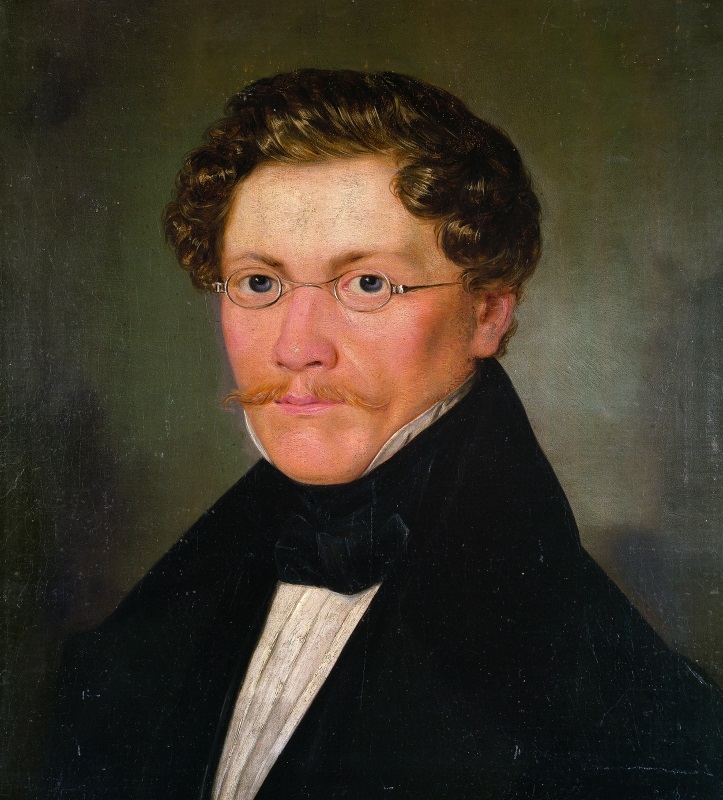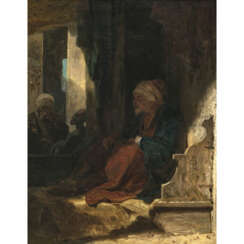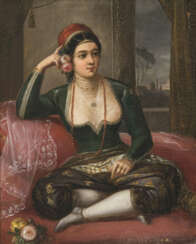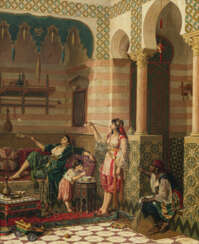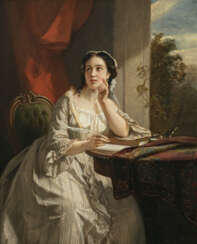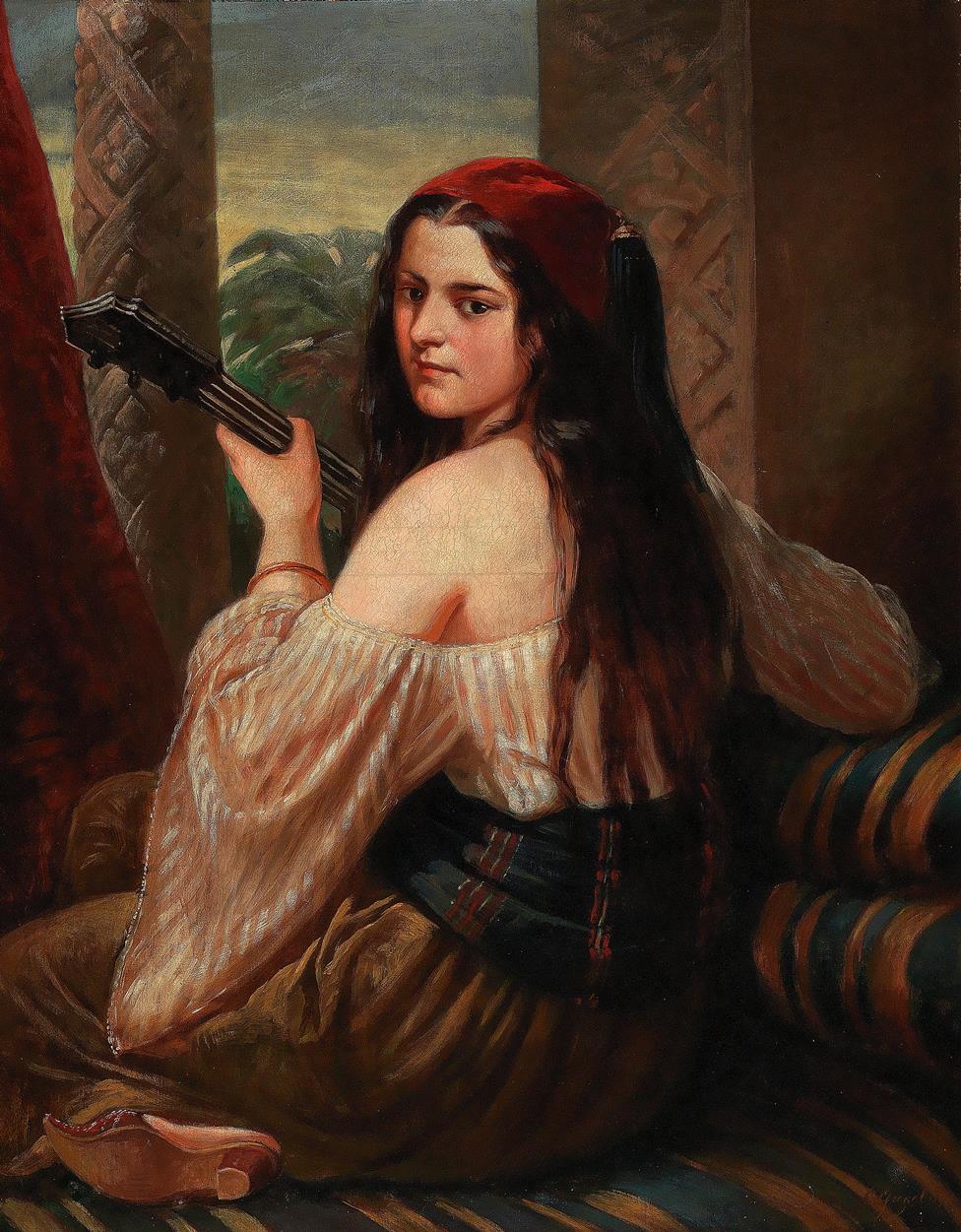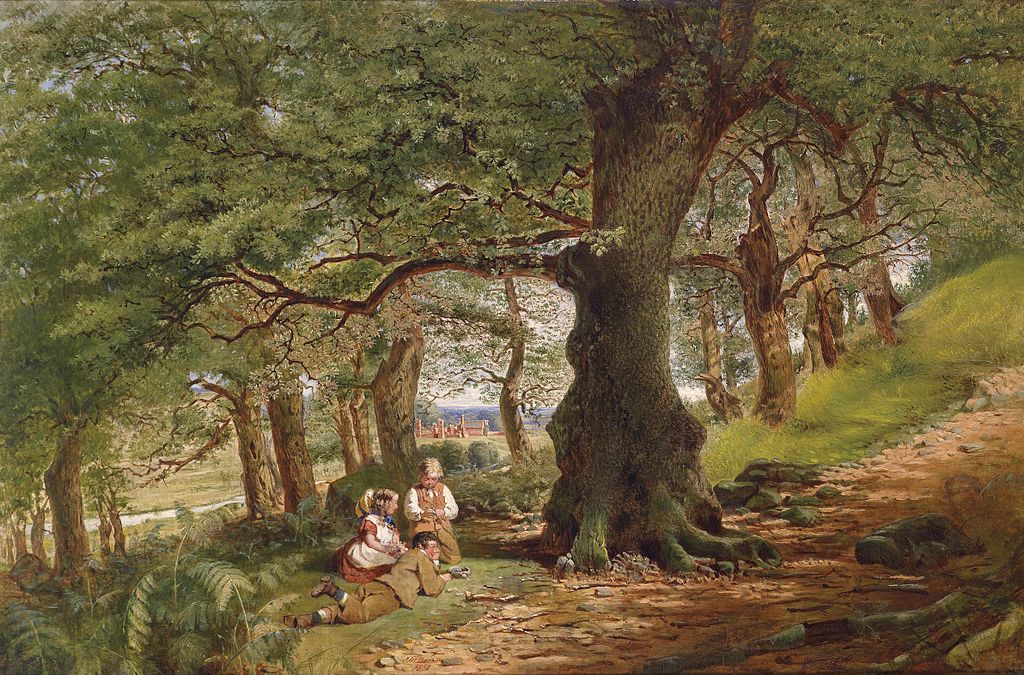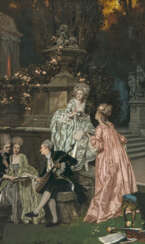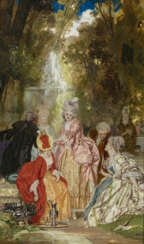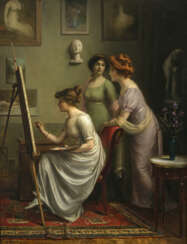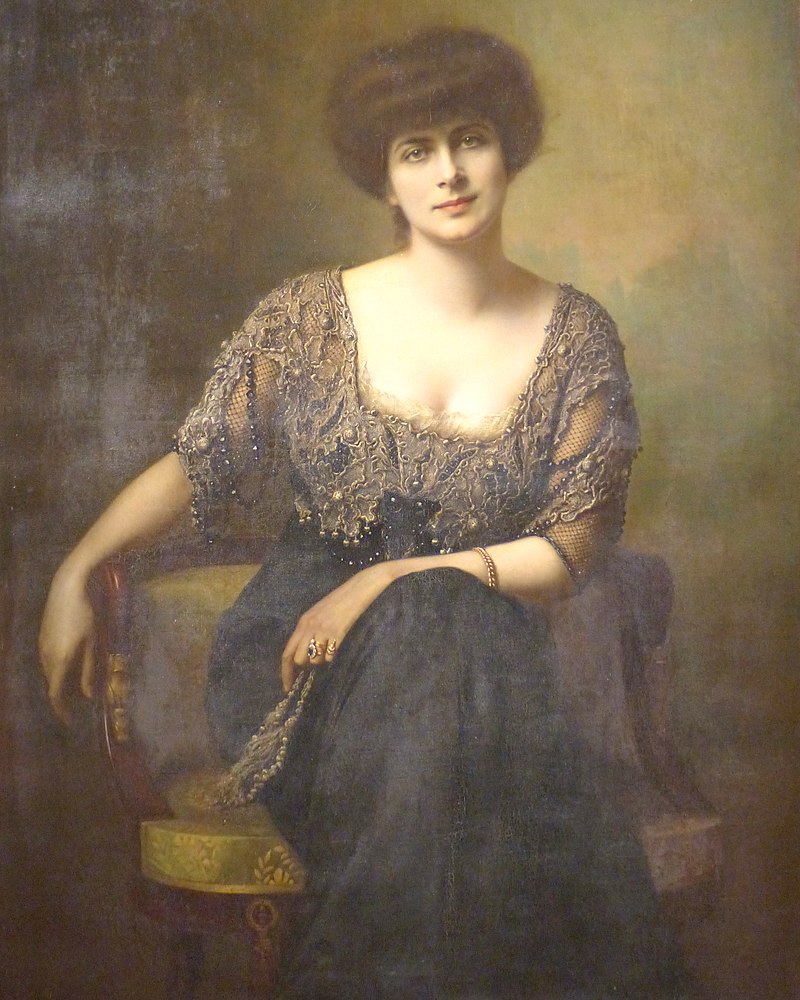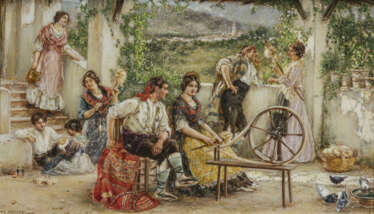
Paintings 19th - 20th century — Graphik und Gemälde 15.-20- Jh
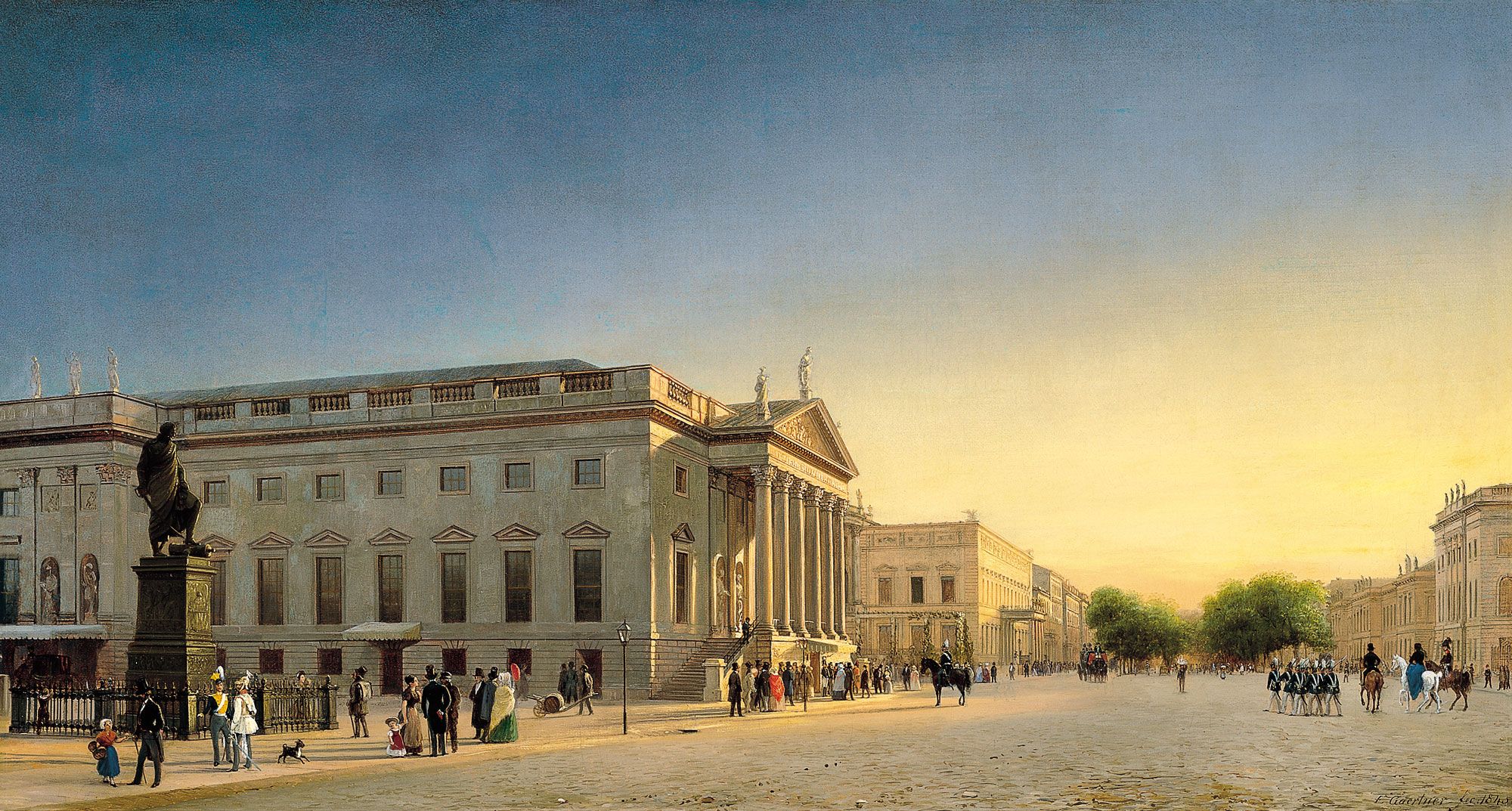
Johann Philipp Eduard Gaertner was a German painter of the second quarter of the 19th century, the Biedermeier era. He is known as a landscape painter, famous for his views of Berlin and other cities.
Eduard Gaertner created many architectural landscapes of Berlin, as well as St. Petersburg and Moscow during his travels to Russia. The value of these works is that they documented the appearance of the cities on the eve of the age of photography. Gaertner's painting style underwent a change after the death of King Friedrich Wilhelm III, his patron. In keeping with the cultural attitudes of Prussia's new ruler, the artist began to paint more romantic and idealized landscapes in which architecture played a decorative role.
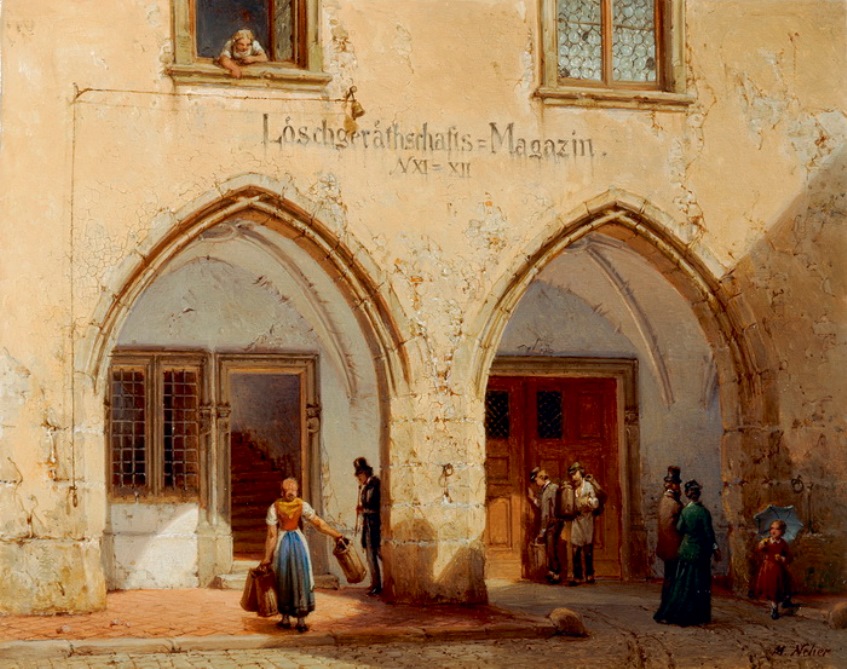
Michael Neher was a German painter and architectural decorator.
Michael studied at the Academy in Munich, in 1819 went to Italy and spent five years there, including two years in Rome, where he studied architectural painting in the studio of the artist Heinrich Maria von Hess, and in 1825 returned to Munich.
As a typical representative of the Biedermeier era, Neher produced many costume drawings and landscapes. He also became famous for his views of public places and architectural depictions of many Bavarian towns. From 1837, Michel Neher devoted himself entirely to architectural painting and traveled to improve his skills along the Rhine and to Belgium. In 1839 he painted several salons in Hohenschwangen Castle from designs by Schwind, Gasner and Schwanthaler. In 1876 he was made an honorary member of the Munich Academy.
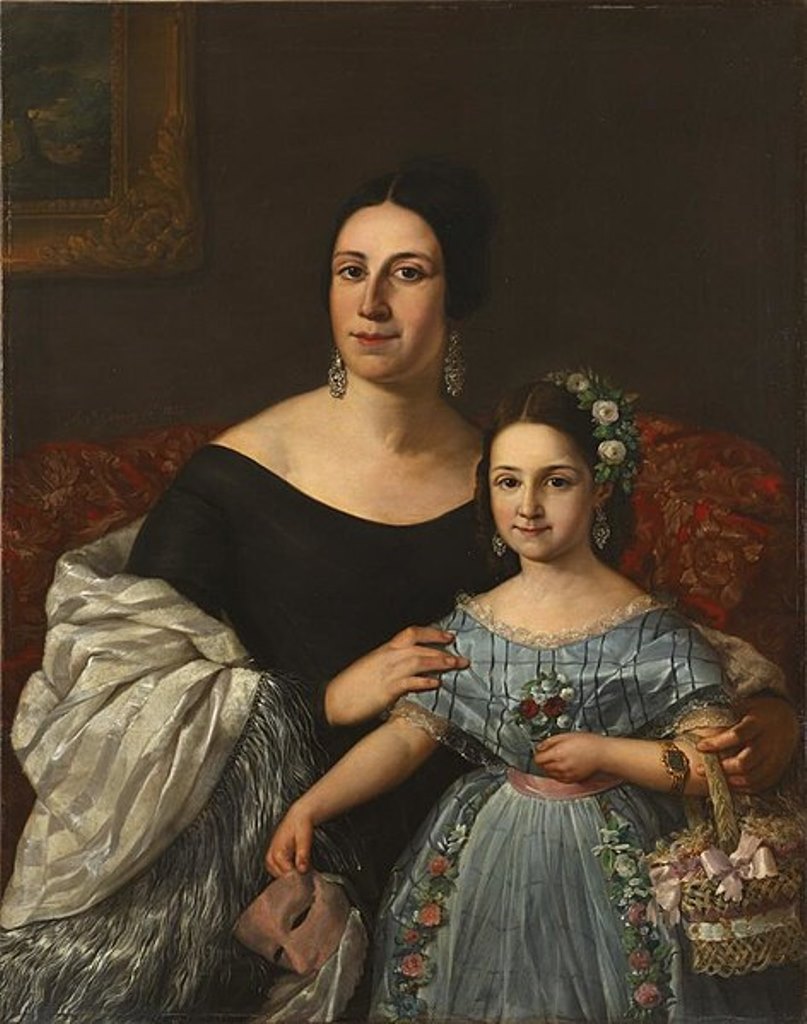
Antonio Gómez Cros was a Spanish painter, lithographer and decorator.
Antonio began studying painting at the Academy of Fine Arts of San Carlos in Valencia and completed his studies at the Royal Academy of Fine Arts of San Fernando. He was a representative of early romanticism with signs of classicism.
Antonio Gómez Cros specialized in historical scenes and was a recognized portrait painter. In 1846 he was appointed honorary chamber painter to Elizabeth II and painted several famous historical, battle and religious paintings in this position. The artist also painted walls and curtains in palaces and theaters.

Georg Perlberg, full name Johann Georg Christian Perlberg, was a German painter active in the 19th century.
Georg was the son of the painter Friedrich Perlberg (1777-1844), from whom he received his first drawing lessons. He then studied at the Art Academy in Munich and returned to Nuremberg.
Georg Perlberg was a master of battle, historical and genre scenes. His sons Georg Christoph Perlberg (1841-1871) and Johann Friedrich Perlberg (1848-1921) were also artists.
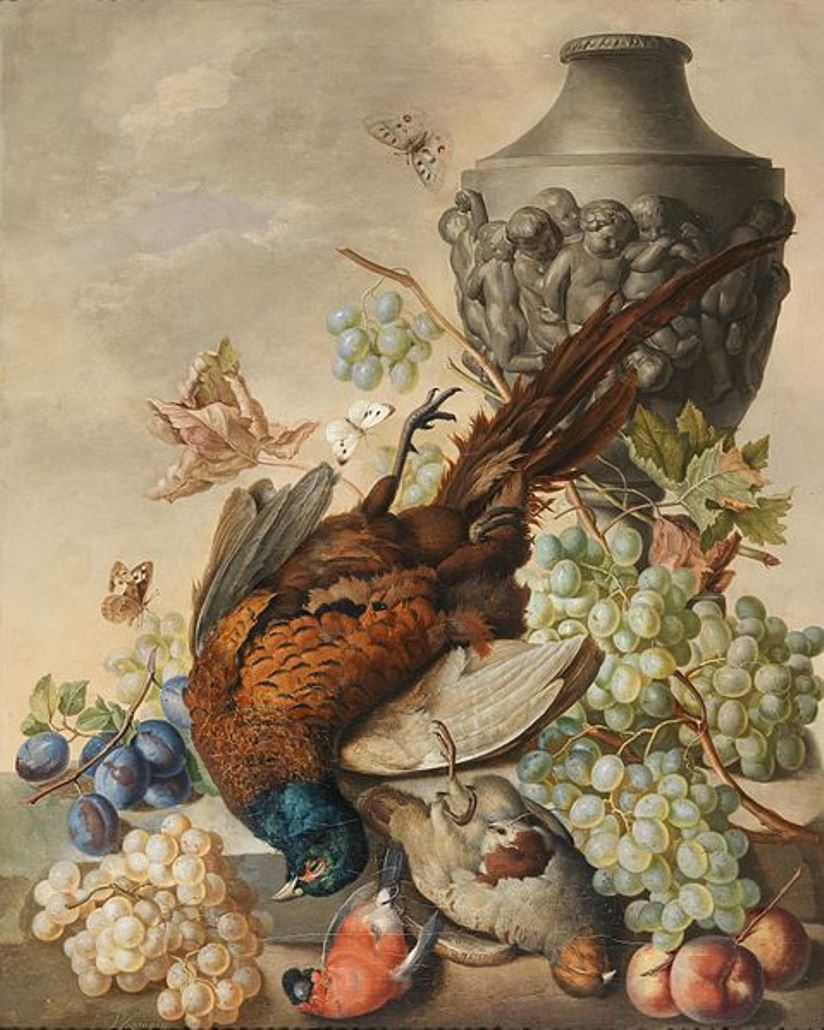
Sebastian Wegmayr was an Austrian painter of the Biedermeier period.
He studied at the Vienna Academy of Fine Arts, then taught floral painting there. Wegmayr specialized in still lifes, both lush floral, fruit and game.
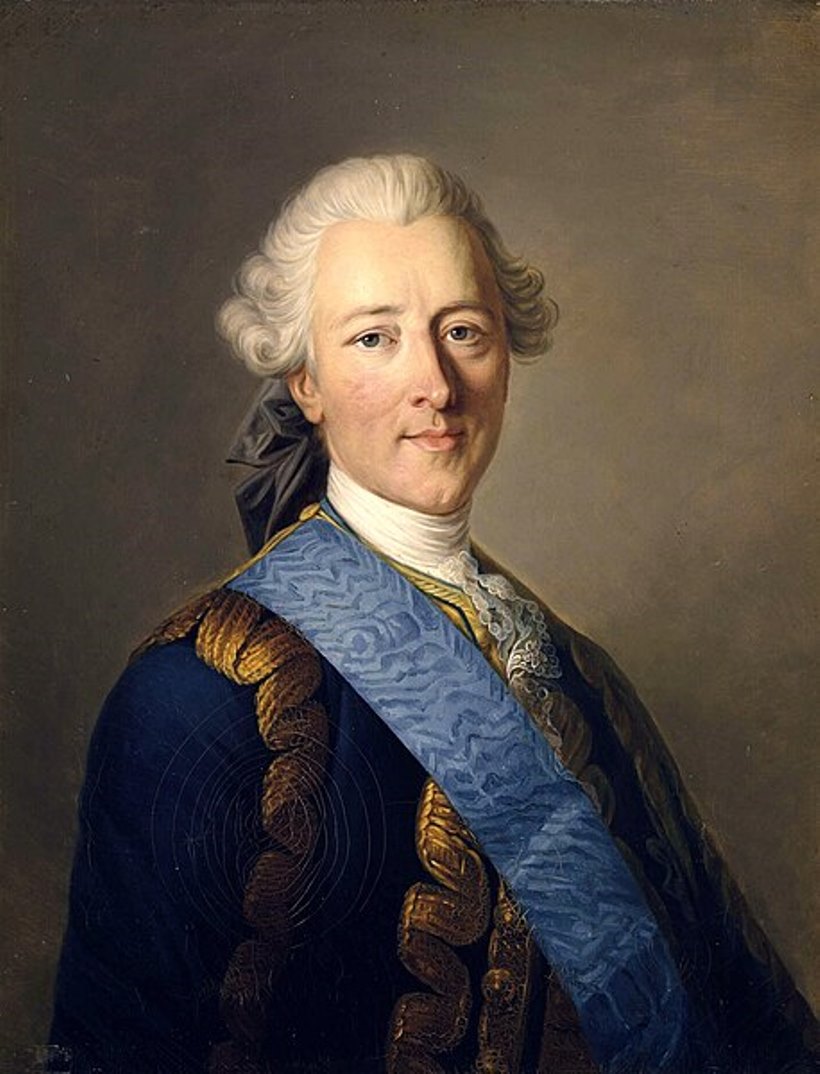
Élise Bruyère, born Elisabeth Henriette Nicole Le Barbier, was a French artist specializing in portraits and floral still lifes.
Bruyère was the daughter of the famous French writer, illustrator and painter of French historical scenes Jean-Jacques-François Le Barbier (1738-1836). Her sister Henriette was also an artist.
Bruyère's work belongs to the realist school of French painting, and the flowers in her paintings are meticulously painted and detailed.
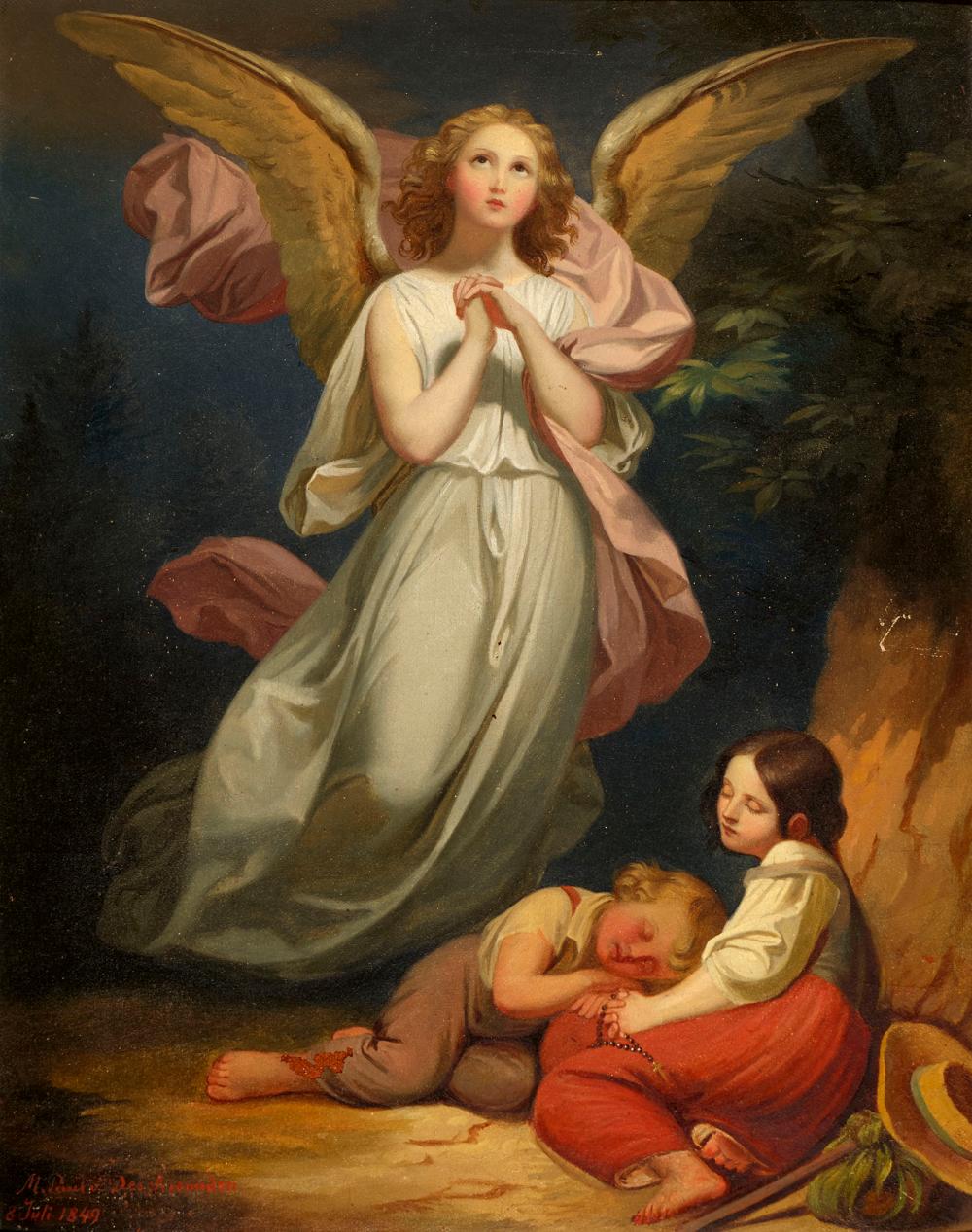
Melchior Paul von Deschwanden was a Swiss painter, representative of the Nazarene style.
He studied at the Munich Academy and then at the Academy of Fine Arts in Florence. His meeting there with the German "Nazarene" Friedrich Overbeck (1789-1869) played a decisive role in the future fate and creativity Deschwanden. He devoted much time to the study of Nazarene art, a romantic-religious artistic movement that German-speaking artists had founded in Vienna and Rome in the early 19th century.
A talented and industrious artist, Melchior Paul von Deschwanden produced some 2,000 paintings in his long life, including numerous altarpieces. These simple yet sublime paintings of religious themes as well as portraits. For some 40 years, Deschwanden remained Switzerland's leading painter.
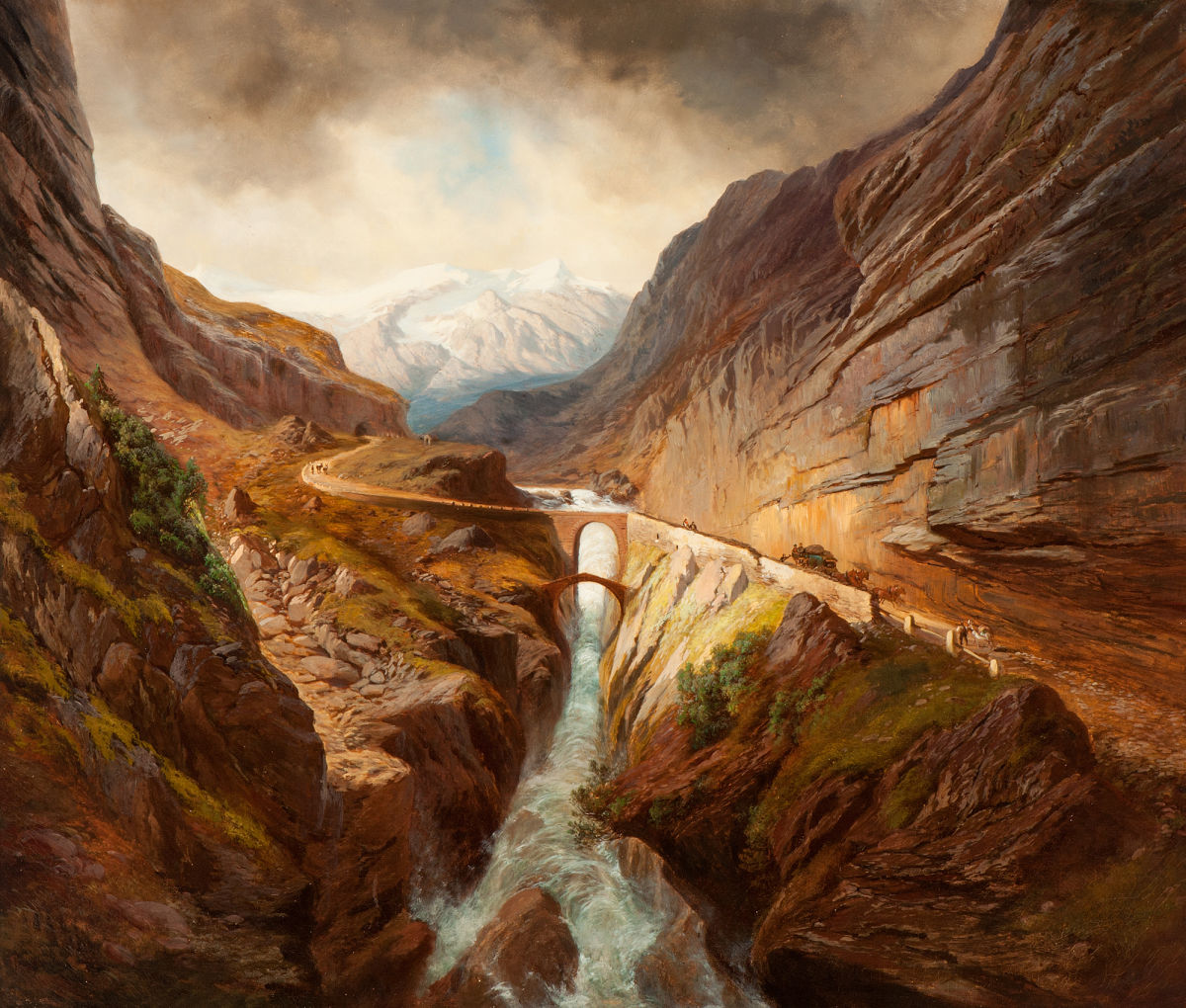
Carl Millner was a German landscape painter.
He quickly established himself as a successful artist and was best known for his popular Alpine landscapes; meticulously rendered with fine details and great attention to light and shadow.
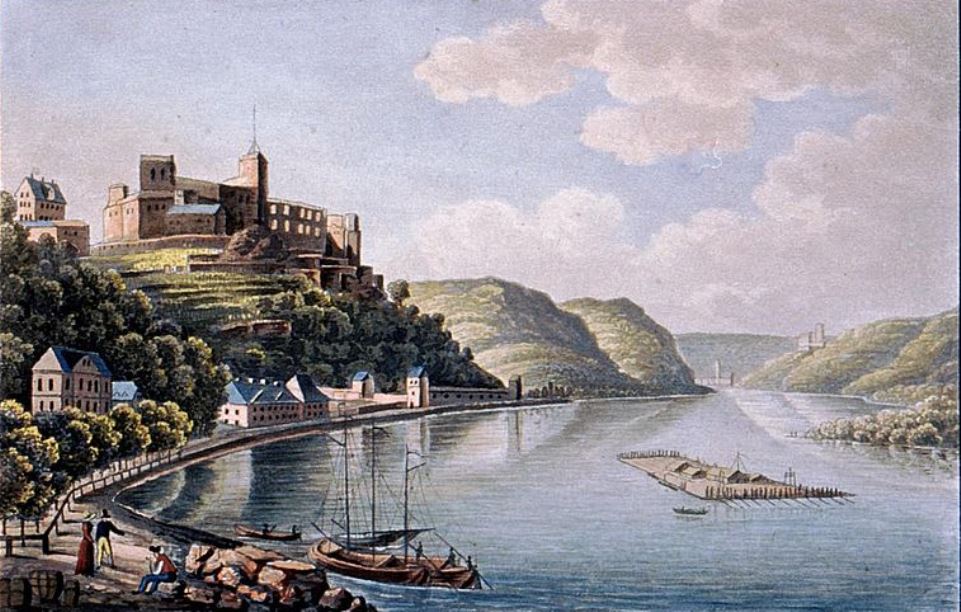
Rudolf Bodmer was a Swiss painter, draughtsman and engraver.
Rudolf was the older brother of the famous painter Johann Carl Bodmer (1809-1893), with whom he started his own business around 1825. They produced graphic prints especially for the Zurich publisher F. S. Füssli. Rudolf Bodmer became a skilled printmaker and produced a large number of aquatints of landscape and architectural views, particularly of castles and palaces in the Middle Rhine for a wide variety of publishers.
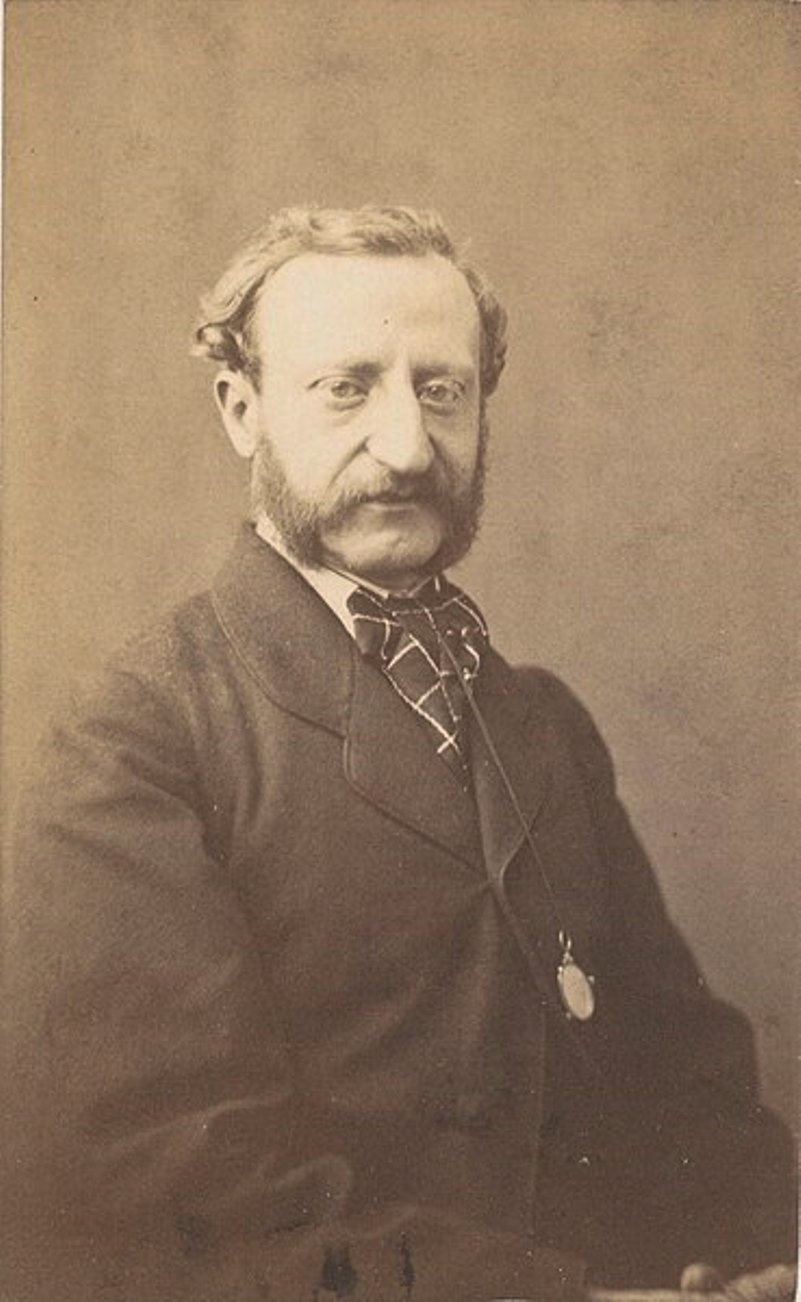
Jan Baptist Huysmans was a Belgian orientalist painter, traveler and writer.
After graduating from the Antwerp Academy, Jan Baptist Huysmans traveled extensively. During his long and prolific artistic career he visited Greece, Turkey, Syria, Palestine, Egypt and Algeria. These travels resulted in numerous sketches and studies, sketches, paintings and memoirs by the artist, who was fascinated by the culture and landscapes of the countries he saw.
In addition to genre paintings of Eastern life, the artist created religious compositions for churches in Jerusalem and decorative panels for church and municipal buildings in Belgian cities.
Huysmans lived most of his professional life in Paris and exhibited in France, England, and Scotland. He also published several illustrated books about his travels, notably Travels in Italy and the East in 1856-1857.
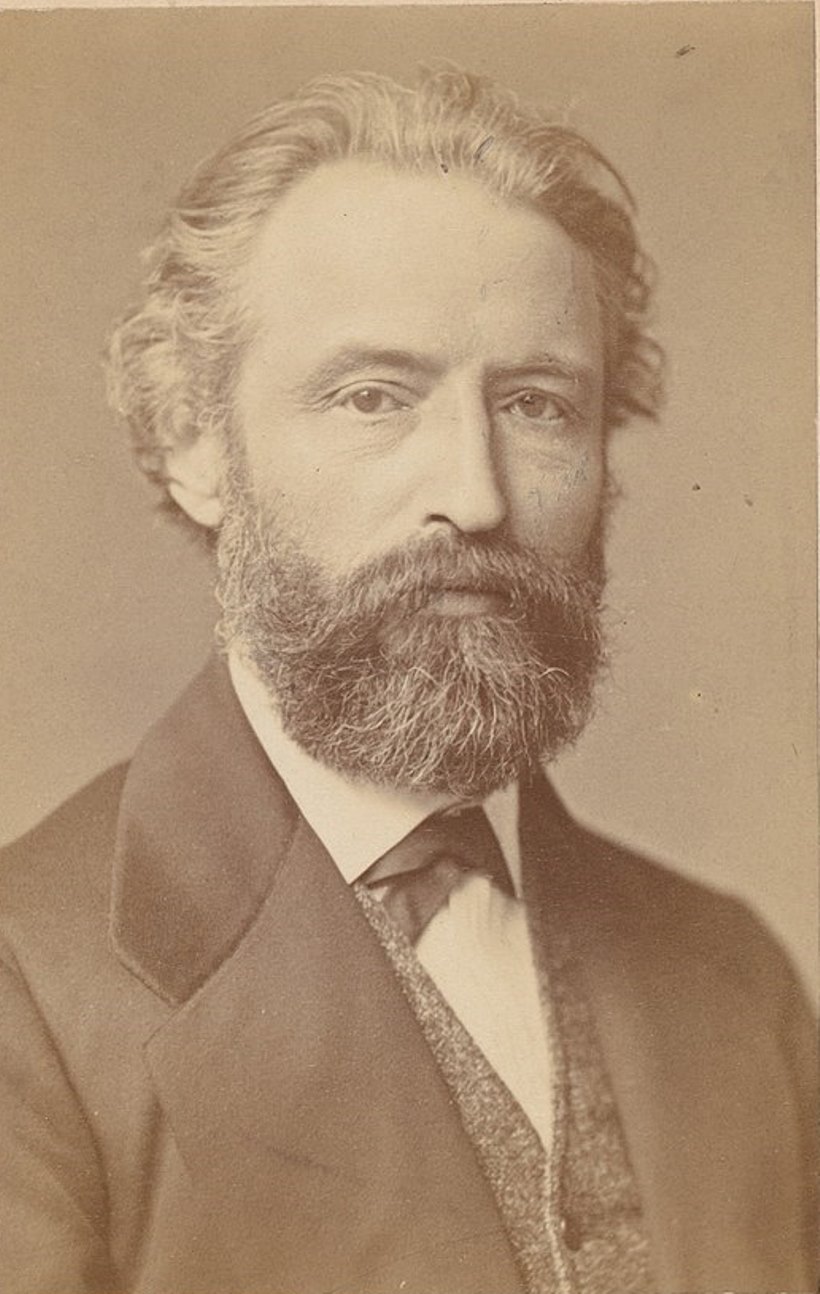
Karl Ludwig Friedrich Becker was a German historical painter of the 19th century.
Becker studied at the Berlin Academy of Fine Arts, and later in Munich he perfected himself under Heinrich Maria von Hess and in Italy. On his canvases the artist depicted mainly scenes from Venetian life in the XVI and XVII centuries.
Karl Becker was elected a member of the council of the Berlin Academy of Arts, and later honorary president of the Academy, as well as a member of the Royal Belgian Academy.
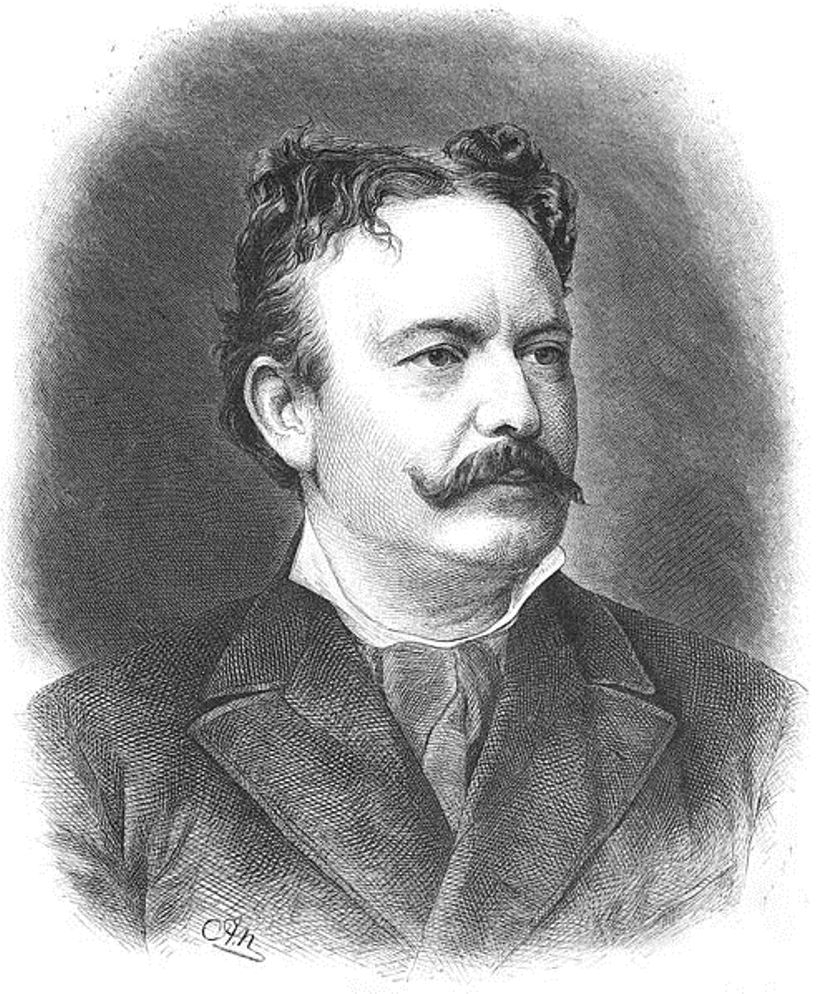
Karl Gussow or Carl Gussow was a German realist painter of the 19th century.
Gussow began his painting studies at the Saxon Art School in Weimar and traveled to Italy. He later worked with the Belgian painter-historian Ferdinand Pauwels, who greatly influenced his style.
Gussow was active as a genre and portrait painter. Over time, his work became characterized by an almost photographic realism, which was not only admired but also criticized, as it was a completely new direction.
Karl Gussow lived in Karlsruhe and Berlin, where he maintained a private ladies' studio, later founding another private painting school. He obtained a position at the Karlsruhe Academy of Fine Arts, also worked at the Prussian Academy of Fine Arts and taught at the Munich Academy of Fine Arts.

Karl Gussow or Carl Gussow was a German realist painter of the 19th century.
Gussow began his painting studies at the Saxon Art School in Weimar and traveled to Italy. He later worked with the Belgian painter-historian Ferdinand Pauwels, who greatly influenced his style.
Gussow was active as a genre and portrait painter. Over time, his work became characterized by an almost photographic realism, which was not only admired but also criticized, as it was a completely new direction.
Karl Gussow lived in Karlsruhe and Berlin, where he maintained a private ladies' studio, later founding another private painting school. He obtained a position at the Karlsruhe Academy of Fine Arts, also worked at the Prussian Academy of Fine Arts and taught at the Munich Academy of Fine Arts.
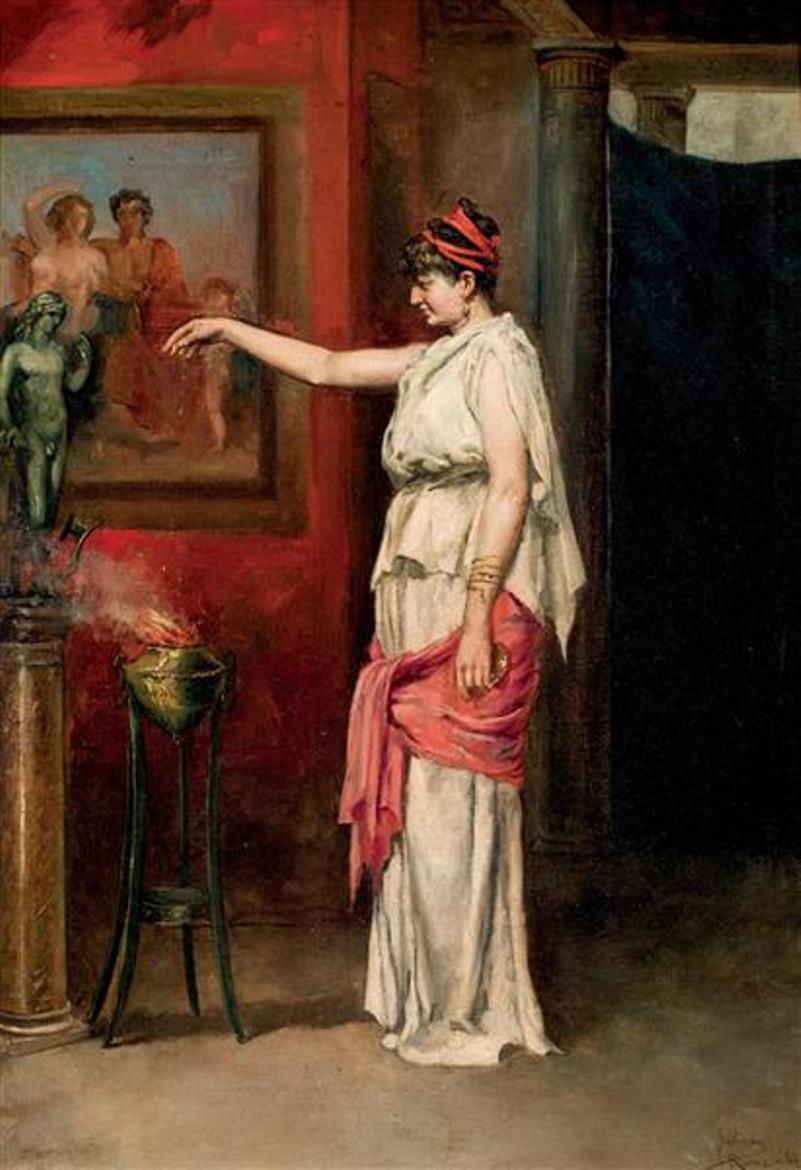
Agustín Salinas y Teruel was a Spanish painter.
Agustín studied at the High School of Painting, Sculpture and Engraving in Madrid. He exhibited his work at several National Expositions of Fine Arts held in the eighties of the nineteenth century.
